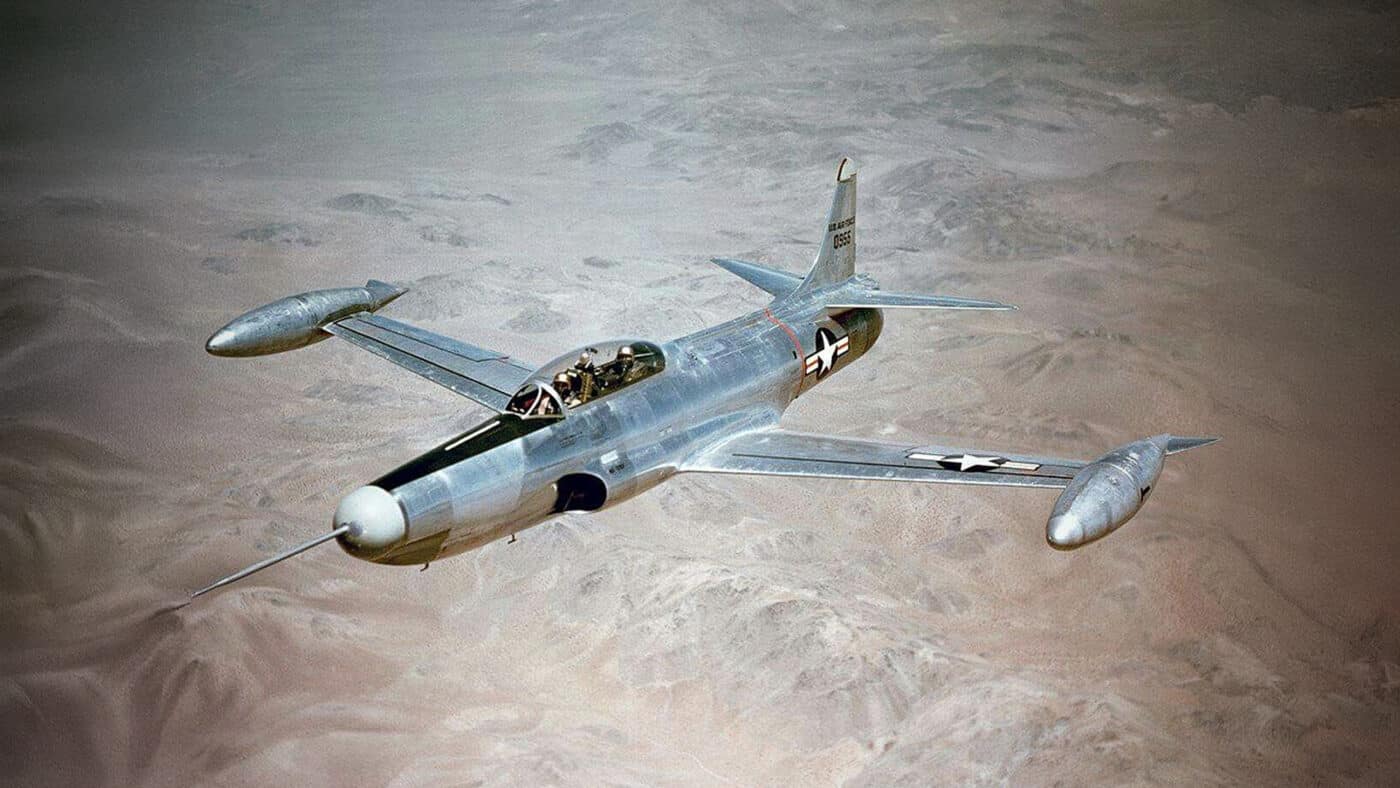The Lockheed F-94 Starfire was developed post-World War II by the U.S. Air Force as an interceptor to counter Soviet threats, notably the Tupolev Tu-4 bomber, which was a reverse-engineered version of the B-29 Superfortress. The F-94 was the first jet-powered fighter equipped with an afterburner, making it an all-weather day/night interceptor, and it played a significant role during the Korean War. This aircraft’s development was based on the T-33 "Shooting Star," sharing a large commonality in parts with its predecessors to expedite production.

The F-94 Starfire was produced in multiple models: A, B, and C, each offering improvements over the previous version. The A model was fitted with four .50-caliber machine guns and a J33A-33 with an afterburner engine. However, due to reliability issues, the B model saw updates mainly in its engine specifications, cockpit design, and landing systems. The C model, developed later, incorporated significant overhauls such as a redesigned wing, advanced radar, and rocket armament instead of guns, showcasing its evolution in aerial warfare technology.
The F-94 served extensively in air defense during the Cold War, protecting U.S. airspace from potential Soviet bombers with the advanced Semi-Automatic Ground Environment (SAGE) system. Despite its relatively short service life, supplanted by newer aircraft models like the Northrop F-89 Scorpion and North American F-86D Sabre, the Starfire was integral in its period, especially in intercept missions during the Korean War. It was notable for achieving the first jet vs. jet nighttime kill, underscoring its legacy in military aviation history. For a detailed account, visit the Lockheed F-94 Starfire — Cold War Soviet Bomber Interceptor at The Armory Life.
No comments:
Post a Comment